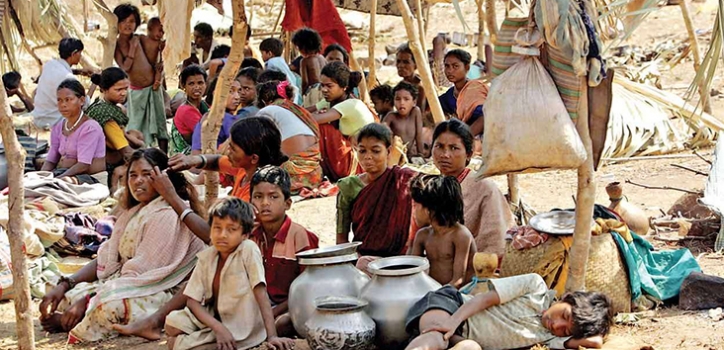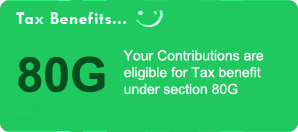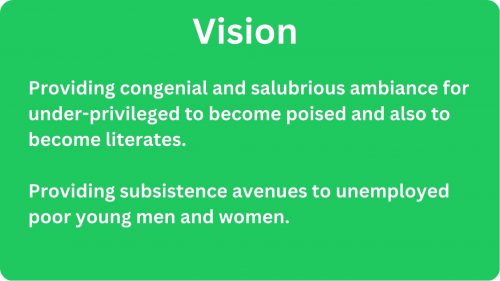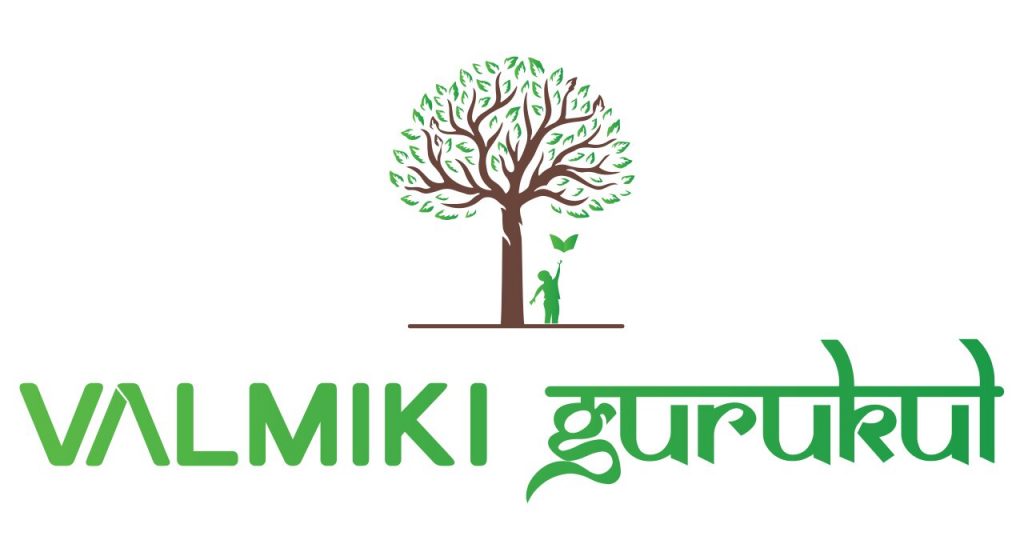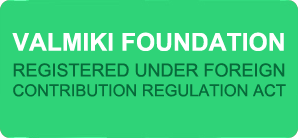Poverty is one of the main problems which have attracted the attention of sociologists and economists. It indicates a condition in which a person fails to maintain a living standard adequate for his physical and mental efficiency. It is a situation people want to escape. It gives rise to a feeling of a discrepancy between what one has and what one should have. The term poverty is a relative concept. It is very difficult to draw a demarcation line between affluence and poverty. According to Adam Smith – Man is rich or poor according to the degree in which he can afford to enjoy the necessaries, the conveniences and the amusements of human life.
Even after more than 50 years of Independence India still has the world’s largest number of poor people in a single country. Of its nearly 1 billion inhabitants, an estimated 260.3 million are below the poverty line, of which 193.2 million are in the rural areas and 67.1 million are in urban areas. More than 75% of poor people reside in villages. The poverty level is not uniform across India. The poverty level is below 10% in states like Delhi, Goa, and Punjab etc whereas it is below 50% in Bihar (43) and Orissa (47). It is between 30-40% in Northeastern states of Assam, Tripura, and Meghalaya and in Southern states of TamilNadu and Uttar Pradesh.
Poverty has many dimensions changing from place to place and across time. There are two inter-related aspects of poverty-Urban and rural poverty. The main causes of urban poverty are predominantly due to the impoverishment of rural peasantry that forces them to move out of villages to seek some subsistence living in the towns and cities. In this process, they even lose the open space or habitat they had in villages albeit without food and other basic amenities. When they come to the cities, they get access to some food through other sanitary facilities including clean water supply still elude them. And they have to stay in the habitats that place them under sub-human conditions. While a select few have standards of living comparable to the richest in the world, the majority fails to get two meals a day. The causes of rural poverty are manifold including inadequate and ineffective implementation of anti-poverty programmes. The overdependence on monsoon with non-availability of irrigational facilities often result in crop-failure and low agricultural productivity forcing farmers in the debt-traps. The rural communities tend to spend a large percentage of annual earnings on social ceremonies like a marriage; feast etc. Our economic development since Independence has been lopsided.T here has been an increase in unemployment creating poverty like situations for many. The population is growing at an alarming rate. The size of the Indian family is relatively bigger averaging at 4.2. The other causes include the dominance of caste system which forces the individual to stick to the traditional and hereditary occupations.
Since the 1970s the Indian government has made poverty reduction a priority in its development planning. Policies have focused on improving the poor standard of living by ensuring food security, promoting self-employment through greater access to assets, increasing wage employment and improving access to basic social services. Launched in 1965, India’s Public Distribution System has helped meet people’s basic food needs by providing rations at subsidized prices. Although it has affected less than 20% of the Poor’s food purchases, the system has been important in sustaining people’s consumption of cereals, especially in periods of drought. It has provided women and girls with better access to food and helped overcome the widespread discrimination against female consumption within households. It has also reduced the burden of women, who are responsible for providing food for the household.
The largest credit-based government poverty reduction programme in the world, the Integrated Rural Development Programme provides rural households below the poverty line with credit to purchase income-generating assets. Launched in 1979, the programme has supplied subsidized credit to such groups as small and marginalized farmers, agricultural laborers, rural artisans, the physically handicapped, scheduled castes and scheduled tribes. Within this target population, 40% of the beneficiaries are supposed to be women. Although the programme has reached 51 million families, only 27% of the borrowers have been women. The programme has significantly increased the income of 57% of assisted families.
Rural poverty is largely a result of low productivity and unemployment. The Jawahar Rozgar Yojana, a national public works scheme launched in 1989 with financing from the central and state governments, provides more than 700 million person-days of work a year about 1% of total employment for people with few opportunities for employment. The scheme has two components: a programme to provide low-cost housing and one to supply free irrigation wells to poor and marginalized farmers. The public works scheme is self-targeting. Since it offers employment at the statutory minimum wage for unskilled manual labor, only those willing to accept very low wages the poor are likely to enroll in the scheme. By providing regular employment and thereby increasing the bargaining power of all rural workers, the public works scheme has had a significant effect on reducing poverty. It has also contributed to the construction of rural infrastructure (irrigation works, a soil conservation project, drinking water supply). Evaluations show that 82% of available funds have been channeled to community development projects. Targeting was improved in 1996 when the housing and irrigation well components were delinked and focused exclusively on people below the poverty line.
TRYSEM (Training rural youth for self-employment) was started to provide technical skills to the rural youth and to help them to get employment in fields such as agriculture, industry, services and business activities. Youth of the poor families belonging to the age-group of 18-35 are entitled to avail the benefits of the scheme. Priority is given to persons belonging to ST/SC and ex-servicemen and about 1/3 seats are reserved for women. Minimum Needs Programme was taken up as an integral part of the 5th Five Year Plan and it was intended to cater to the minimum needs of the people such as rural water supply, rural health, road building, adult education, primary education, rural electrification and improvement of the urban slums etc. With the intention of removing urban unemployment some schemes such as SEPUP (Self-employment programme for the urban poor); SEEUY (Scheme for self-employment of the educated urban youths). These schemes give loans and subsidies for the urban unemployed youths to create or to find for themselves some jobs. The SEPUP had provided financial help for about 1.19 urban unemployed youths in the year 190-91.
The participation of civil society organizations in poverty reduction efforts, especially those directed to women, has increased social awareness and encouraged governments to provide better services. Cooperatives such as the Self-Employed Women’s Association provide credit to women at market rates of interest but do not require collateral; they also allow flexibility in the use of loans and the timing of repayments. These civil society organizations have not only contributed to women’s material well being; they have also helped empower them socially and politically. Such credit initiatives, by bringing women out of the confines of the household, are changing their status within the family and within village hierarchies. The demands of civil society organizations for better social services have spurred the government to launch campaigns to increase literacy and improve public infrastructure. And their calls for greater accountability and real devolution of power are increasing the likelihood that expenditures for poverty reduction will reach the needy, especially women.
Why 1 million Indians Escape from India every year? December 9, 2007, by Cyber Gandhi
Any crackdown on illegal immigrants abroad or restricting quotas to Indians are a major concern to India’s politicians. The latest statistics from US Department of Homeland Security shows that the numbers of Indian illegal migrants jumped 125% since 2000! Ever wondered why Indians migrate to another country but no one comes to India for a living?
Here are some Indian facts – Poverty Graph
India accounts for 40 % of the world’s poor (more than in the whole of Africa) and its fiscal deficit is one of the highest in the world. India ranks way down at 96 among 119 developing countries included in the Global Hunger Index (GHI). Ref: IFPRI Country Report on India.

Around six out of 10 Indians live in the countryside, where abject poverty is widespread. 34.7 % of the Indian population lives with an income below $ 1 a day and 79.9 % below $ 2 a day. According to India’s planning commission report, 26.1 % of the population live below the poverty line. [World Bank’s poverty line of $1 a day, but the Indian poverty line of Rs 360 a month, or 30 cents a day]
The Current Account Balance of India
“A major area of vulnerability for us is the high consolidated public-debt to GDP ratio of over 70 percent (and) consolidated fiscal deficit,” says the Governor of Reserve Bank of India (RBI), Mr. Yaga Venugopal Reddy. According to the CIA world fact book, the Current account balance of India is -10,360,000,000 (minus) while China is the wealthiest country in the world with $ 249,900,000,000 (Plus). India listed as 152 and China as no.1 [CIA: The world fact book].Amnesty International (AI) 2008 report on issues within India.
Human Development vs. GDP growth
The Human Development Report for 2007-08 released by the UNDP ranked India 128 out of 177 countries, working it out through measures of life expectancy, education, and income. Malaysia ranked 63 and listed at under High Human Development category. The report found that India’s GDP per capita (purchasing power parity) is $3,452, far below Malaysia’s $10,882. China listed as 81. Read the statistics from the UNDP website.

Dalits: Caste discrimination. Poverty stricken and destitute
Population: According to the Indian census of 2001, the total population was 1.028 billion. Hindus numbered 827 million or 80.5 %. About 25 percent (24 million) of those Hindus are belonging to Scheduled Castes and Tribes. About 40 percent (400 million) are “Other Backward Castes”. 15 percent Hindu upper castes inherited the majority of India’s civil service, economy and active politics from British colonial masters. And thus the caste system virtually leaves lower caste Hindus into an oppressed majority in India’s power structure. The 2004 World Development Report mentions that more than 25% of India’s primary school teachers and 43% of primary health care workers are absent on any given day!
Living conditions of Indians: 89 percent of rural households do not own telephones; 52 percent do not have any domestic power connection. There are daily power cuts even in the nation’s capital. The average brownout in India is three hours per day during non-monsoon months, 17 hours daily during the monsoon. The average village is 2 kilometers away from an all-weather road, and 20 percent of rural habitations have partial or no access to a safe drinking-water supply. [Tarun Khanna, Yale Center for the Study of Globalization]

Around 60 percent of people are not having access to financial institutions in India. This figure is less than 15 percent in developed countries. (NABARD) According to the National Family Health Survey data (2005-06), only 45 percent of households in the country had access to improved sanitation.
Education: India has over 35 percent of the world’s total illiterate population. [UNESCO Education for All Report 2008] Only 66 percent of people are literate in India (76 percent men and 54 percent women) About 40 million primary school-age children in India are not in school. More than 92% of children cannot progress beyond secondary school. According to reports, 35 percent of schools don’t have infrastructures such as blackboards and furniture. And close to 90 percent have no functional toilets. Half of India’s schools still have leaking roofs or no water supply.
Japan has 4,000 universities for its 127 million people and the US has 3,650 universities for its 301 million, India has only 348 universities for its 1.2 billion people. In the prestigious Academic Ranking of World Universities by Institute of Higher Education, Shanghai Jiao Tong, only two Indian Universities are included. Even those two IITs in India found only a lower slot (203-304) in the 2007 report. Although Indian universities churn out three million graduates a year, only 15% of them are suitable employees for blue-chip companies. Only 1 million among them are IT professionals.
Health: India has the single highest share of neonatal deaths in the world, 2.1 million. 107,000 Leprosy patients live in India. 15.3 % of the population do not survive to the age of forty. Serpent attacks kill as many as 50,000 Indians while the cobra occupies a hallowed place in the Hindu religion. Heart disease, strokes, and diabetes cost India an estimated $9 billion in lost productivity in 2005. The losses could grow to a staggering $200 billion over the next 10 years if corrective action is not taken quickly, says a study by the New Delhi-based Indian Council for Research on International Economic Relations. There are only 585 rural hospitals compared to 985 urban hospitals in the country. Out of the 6,39,729 doctors registered in India, only 67,576 are in the public sector and the rest either in private sectors or abroad, pointing towards the severity of the problem. Tuberculosis (TB) is a major public health problem in India. India accounts for one-fifth of the global TB incident cases. Each year about 1.8 million people in India develop TB, of which 0.8 million are infectious cases. It is estimated that annually around 330,000 Indians die due to TB. [WHO India]Economy under the siege of Elite HindusMap of India showing the highest concentration of Brahmins and Hindu extremists known as Hinduvta”]
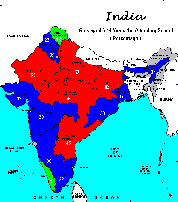
India Infanticide map: Killing 10 million baby girls before and right after brithAmnesty International (AI) 2008 report on issues within India (http://rupeenews.com/2008/05/29/amne…id-India)India today allocates lower than one percent gross domestic product (GDP) to health. According to United Nations calculations, India’s spending on public health as a share of GDP is the 18th lowest in the world. 150 million Indians are blind. 2.13 percent of the total population (21.9 million) live with disabilities in India. Yet, only 34 percent of the disabled are employed [Census 2001
In India, the wealth of 36 families amounts to $ 191 billion, which is one-fourth of India’s GDP. In other words, 35 elite Hindu families own quarter of India’s GDP by leaving 85 % ordinary Hindus as poor! The dominant group of Hindu nationalists comes from the three upper castes ( Brahmins, Kshatriyas, and Vaishyas ) that constitute only 10 percent of the total Indian population. But, they claim perhaps 80 % of the jobs in the new economy, in sectors such as software, biotechnology, and hotel management.
Corruption: According to TI, 25 % of Indians paid a bribe to obtain a service. 68 % believe that governmental efforts to stop the corruption as ineffective. More than 90 % consider police and political parties as the worst corrupt institutions. 90 % of Indians believe that corruption will increase within the next 3 years. “Corruption is a large tax on Indian growth, It delays the execution, raises costs and destroys the moral fiber,” says Prof. Rama Murthi. Transparency International estimates that Indian truckers pay something in the neighborhood of $5 billion annually in bribes to keep freight flowing. According to Rahul Gandhi, only 5 percent of development funds reached their intended recipients due to hierarchical corruption in the country! [Financial Times]Discrimination against Dalits Crime against Dalits occurs every 20 minutes in India.
Every day 3 Dalit women are raped, 2 Dalits are murdered and 2 Dalit houses are burnt down! These figures represent only a fraction of actual incidents since many Dalits do not register cases for fear of retaliation by the police and upper-caste Hindu individuals. Official figures show that there are still 0.343 million manual scavengers in India from the Dalit community. More than 165 million Dalits in India are simply abused by their Hindu upper castes for their birth! [HRW Report2007]
Human Rights: When it comes to Human Rights issues in India, it is not ratified the UN Convention against Torture, its citizens do not have the opportunity to find recourse in remedies that are available under international law. The victims are trapped with the local Hindu caste system, which in every aspect militates against their rights.
India has a very poor record of protecting the privacy of its citizens, according to the latest report from Privacy International (PI). India scored 1.9 points, which makes it an ‘extensive surveillance society’. A score between 4.1 and 5.0 (the highest score) would mean a country “consistently upholds human rights standards”. PI is a watchdog on surveillance and privacy invasions by governments and corporations.
[Surveillance Report 2007]
The police in India continue to remain militaristic in design and suppressive in practice. The police officials are accused of favoritism, being discourteous to the public, and ignoring the complaints of the poor. Moreover, they are seen as violators of the law, open-handedly accepting bribes and fabricating various elements of investigations. Many victims conclude that a justice system accessible to the poor of the land does not exist at all.
Fake encounter killings are rampant in India. These extrajudicial killings are inspired by theological texts of Brahmins like Artha Shastra and Manusmriti which teaches espionage and torture methods. Every such killing of an innocent person, branded a terrorist, has encouraged the killer cops to target socially excluded communities like Dalits, tribals, and minorities.
According to the National Human Rights Commission, as on 30th June 2004, there were 3, 32,112 prisoners in Indian jails out of which 2,39,146 were under trial prisoners. That’s more than 70 %. India’s jails hold a disproportionate number of the country’s minority Muslims, a sign of discrimination and alienation from the Hindu majority. The bar association in India’s largest state, Uttar Pradesh, has refused to represent 13 Muslim suspects accused bombing courthouses in 2005. A large part of Indian attorneys and judges appear regularly on the events organized by notorious Hindu militant groups. Prison statistics of Indian Jails can be seen from National Crime Record Bureau, here
Minorities: About 20 %, or 200 million, are religious minorities. Muslims constitutes 138 million or 13.4 5, Christians 24 million or 2.3 %, Sikhs 19 million or 2 %, Buddhists 8 million or 0.8 % and Jains 4 million or 0.4 %. “Others” numbered 6.6 million or 0.6 %. According to Mr. Tahir Mahmood, an Indian Muslim journalist, “The 2.3 % Christians in the Indian population cater to 20 % of all primary education in India, 10 % of all the literacy and community health care, 25 % of all existing care of destitute and orphans, 30 % of all the handicapped, lepers and AIDS patients etc”.
Discrimination against Minority Muslims: Recently, Justice Rajinder Sachar Committee report admitted that 138 Million Muslims across India are severely under-represented in government employment, including Public Sector Units. Ironically, West Bengal, a communist-ruled state reported 0 (zero) percent of Muslims in higher positions in its PSUs! It has found that the share of Muslims in government jobs and in the lower judiciary in any state simply does not come anywhere close to their population share. The only place where Muslims can claim a share in proportion to their population is in prison! (Muslims convicts in India is 19.1%, while the number of undertrials is 22.5%, which exceed their population ratio) . A note sent on January 9 by the army to the defense ministry in 2004 says that only 29,093 Muslims among a total of 1.1 million personnel – a ratio of 2.6 %, which compares poorly with the Muslims’ 13.8 % share in the Indian population. Officially, Indian Army doesn’t allow headcount based on religion.

The genocide of Muslims in Kashmir; Kashmiris want to join Pakistan
A Muslim child attends school for three years and four months, compared to the national average of four years. Less than two percent of the students at the elite Indian Institutes of Technology comprises of the Muslim community. According to the National Knowledge Commission member Jayathi Ghosh, ‘there is a need to re-orient official strategies for ensuring better access of Muslim children to schooling outside the madrasas which cater to only four percent children from the community”.
The Indian state has undoubtedly failed in its responsibilities towards its citizens over the last 50 odd years. There is a need for the state to move out of many areas and the process has been started with economic liberalization. The process of decentralization should devolute lot more powers, both functional and financial, to panchayats. The lack of transparency and accountability has hampered our economic development at all levels. The problem of poverty persists because of a number of leakages in the system. New laws have to be evolved to ensure more accountability. Bodies like the Planning Commission should be modified into new constitutional bodies that can hold governments accountable for their failure to implement development programmes. A strong system of incentives and disincentives also needs to be introduced. The encouragement of non-governmental organizations and private sector individuals in tackling poverty is imperative, as the state cannot do everything.
